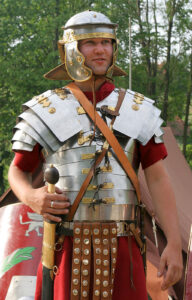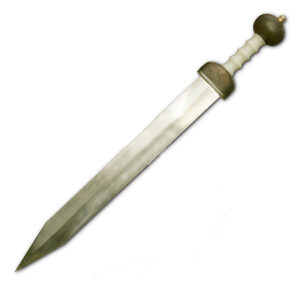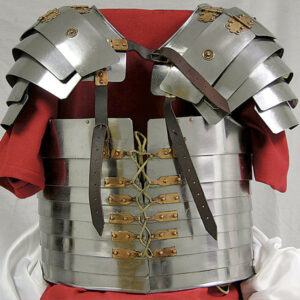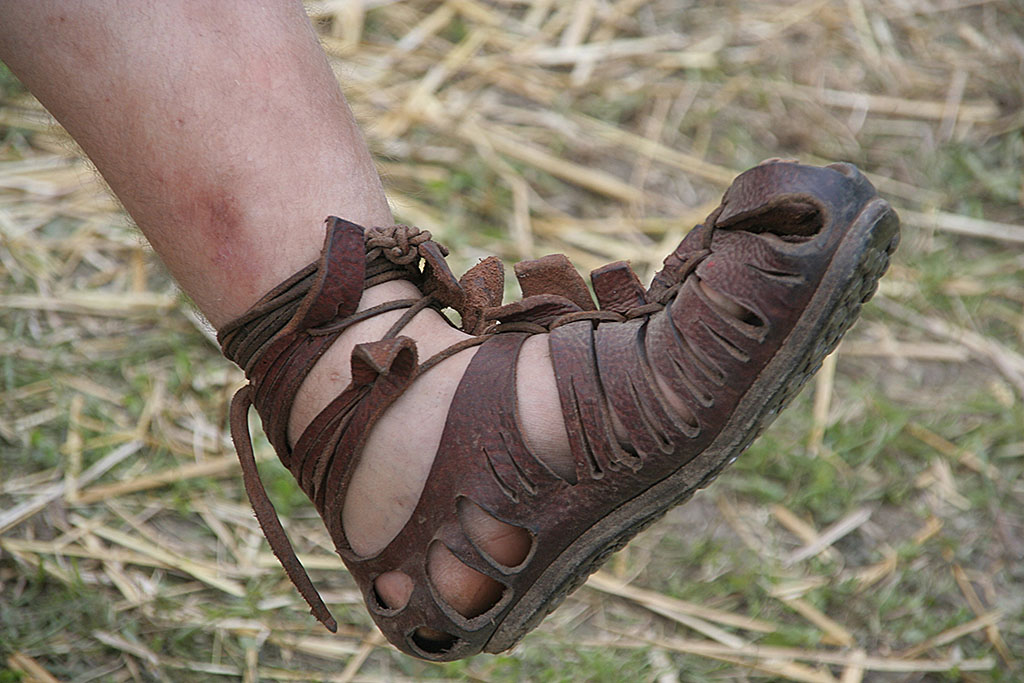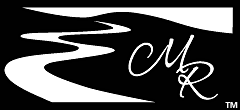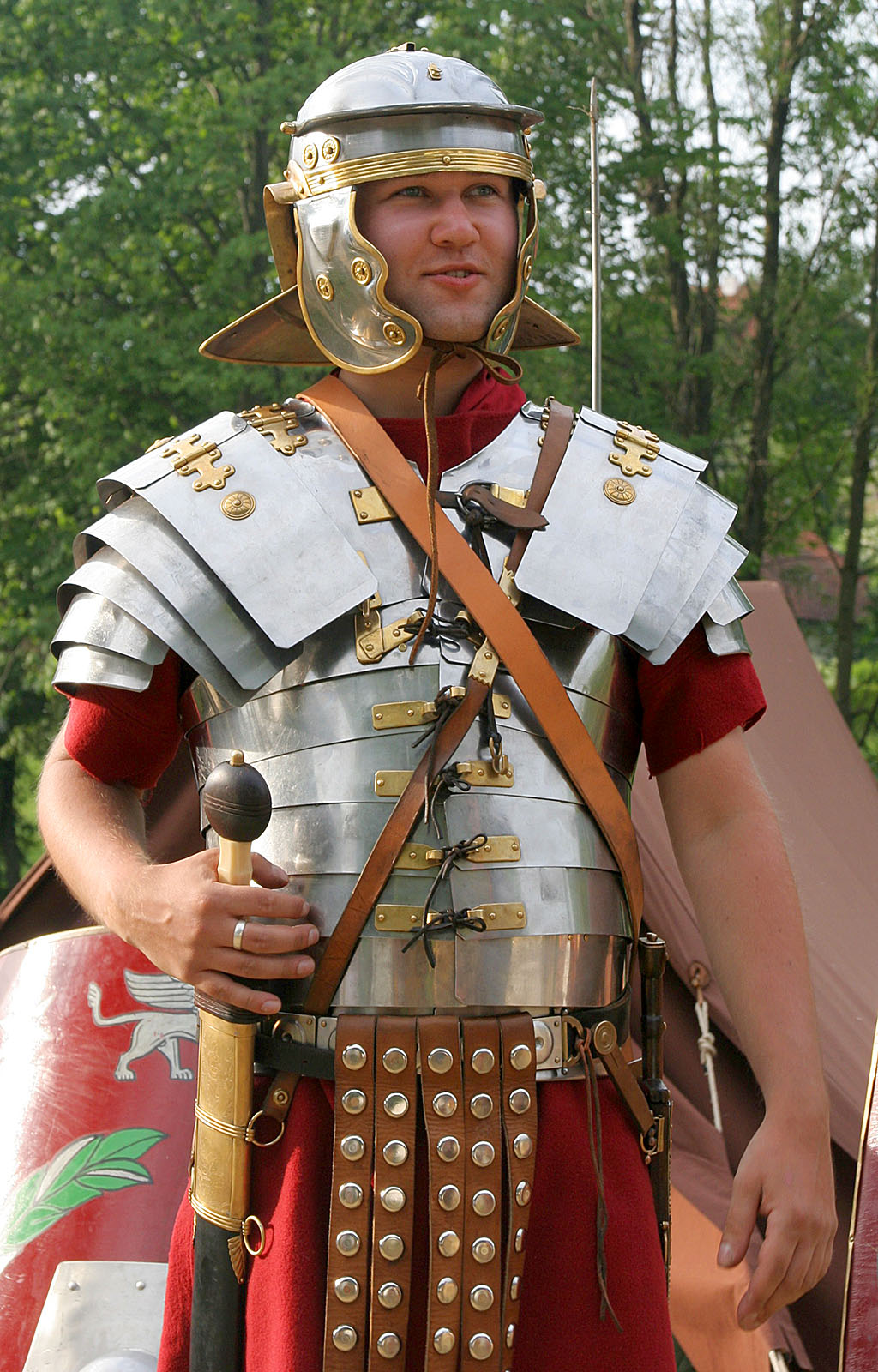
I cannot even begin to count the number of sermons, books, and other teachings I’ve encountered on this topic over the last 40 years.
As I was listening to my wife quote the latest iteration from a best-selling Christian author’s book, it suddenly hit me that in every instance I can remember, the authors — while excellent teachers all — displayed a distinct lack of knowledge concerning actual ancient warfare when soldiers were wearing armor and wielding swords and shields. Some had had accurate descriptions of the equipment, but no one I could recall had accurately portrayed how they were actually used!
Another aspect of their teachings is the authors tend to focus entirely upon the function of each piece of armor individually, but rarely, if ever, describe how those pieces work together when used offensively or defensively.
Let’s see how introducing that kind of additional information impacts this teaching and then apply the results to our prayer lives.
The Foundational Scripture
The passage used for this teaching is found in Paul’s Epistle to the Ephesians:
Since Paul was a Roman citizen and Roman soldiers and auxiliaries were ubiquitous throughout the empire, it is extremely likely the armor and weaponry Paul had in mind as he was writing this passage were those in use by the Roman army of the day, so we will examine each piece of armor using that as a logical assumption.Finally, my brethren, be strong in the Lord and in the power of His might. Put on the whole armor of God, that you may be able to stand against the wiles of the devil, for we do not wrestle against flesh and blood, but against principalities, against powers, against the rulers of the darkness of this age, against spiritual hosts of wickedness in the heavenly places.
Therefore take up the whole armor of God, that you may be able to withstand in the evil day, and having done all, to stand. Stand therefore, having girded your waist with truth, having put on the breastplate of righteousness, and having shod your feet with the preparation of the gospel of peace; above all, taking the shield of faith with which you will be able to quench all the fiery darts of the wicked one and take the helmet of salvation, and the sword of the Spirit, which is the word of God; praying always with all prayer and supplication in the Spirit, being watchful to this end with all perseverance and supplication for all the saints
Ephesians 6:10-18
Swords & Shields
Most teachers make the mistaken claim that a shield and armor are only for defense and a sword for offense.
As someone who has become relatively skilled at two different forms of sword combat in times past (epée fencing and Japanese kenjutsu), I take serious issue with this claim. Neither sport fencing (all three styles of which hearken back to actual European swordplay) nor kenjutsu/kendo rely on the presence of a shield, yet practitioners skilled in those arts can defend themselves quite nicely without one, thank you very much! And these are but two examples of sword combat that require no shield for defense — there are many more!
Swords
The word Paul used for “sword” is the Greek word machaira:
- machaira
- a small straight sword used for thrusting/stabbing
The double-edged blade of a gladius was about 24″ in length and sharpened to a needle point which could easily punch through the inferior chain-mail and leather armor used by many of their barbarian opponents.
Misconception #1
I’ve already stated how swords can be used both in the offense and defense. So how do you defend yourself from a sword attack using nothing but a sword?
By parrying!
A parry takes place whenever you use your own weapon to block or redirect your opponent’s attack so it doesn’t hit you. You then follow up your parry with a riposte, a counterattack.
A sequence of such exchanges (attack-parry-riposte, etc.) is called a phrase in fencing. And in combat, a series of such phrases are strung together until either you or your opponent lands an attack and scores. In modern fencing, that’s merely a point displayed on a scoreboard — in ancient times, landing an attack resulted in one of the following physical wounds:
- A scratch or shallow cut
- A non-fatal penetrating wound or deep cut into/through muscle tissue without severing any major blood vessels
- The fatal severing of a major blood vessel, such as the femoral artery
- A fatal penetrating wound to vital organs, such as the heart, liver, or GI tract
- The loss of a limb, most likely fatal due #3 above
- Decapitation
Unlike duels which often ended when first blood was drawn, in pitched battles a shallow cut doesn’t end it — only a fatal wound to your opponent will suffice because he may otherwise continue his attack on you or your fellow soldiers after you have moved on to another opponent. Both the movies Gladiator and Braveheart accurately portray this kind of horrific combat.
So in the case of the sword of the Spirit, you use it to both attack and defend against the powers of darkness (not fellow human beings — remember, we’re not warring not against flesh and blood!).
Misconception #2
Another point is that your physical Bible is not your sword nor is your pocket Bible your “dagger” nor is the Bible app on your smartphone or tablet your “light saber.”
Here’s why: the Greek word translated as “Word” in “Word of God” in this passage is not the logos or written Word of God as recorded in John 1, but the rhema, the spoken Word of God. Here’s the difference:
- logos
- the sayings of God; a decree, mandate or order of the moral precepts given by God; Old Testament prophecy given by the prophets
- rhema
- that which is or has been uttered by the living voice
So the sword of the Spirit is wielded when we speak the Word, not when we read, study, memorize, or think it. This is borne out in passages where John describes his vision of Jesus in the Book of Revelation.
Then I turned to see the voice that spoke with me. And having turned I saw seven golden lampstands, and in the midst of the seven lampstands One like the Son of Man, clothed with a garment down to the feet and girded about the chest with a golden band. His head and hair were white like wool, as white as snow, and His eyes like a flame of fire; His feet were like fine brass, as if refined in a furnace, and His voice as the sound of many waters; He had in His right hand seven stars, out of His mouth went a sharp two-edged sword, and His countenance was like the sun shining in its strength.
Revelation 1:12-16 (emphasis mine)Now I saw heaven opened, and behold, a white horse. And He who sat on him was called Faithful and True, and in righteousness He judges and makes war. His eyes were like a flame of fire, and on His head were many crowns. He had a name written that no one knew except Himself. He was clothed with a robe dipped in blood, and His name is called The Word of God. And the armies in heaven, clothed in fine linen, white and clean, followed Him on white horses. Now out of His mouth goes a sharp sword, that with it He should strike the nations. And He Himself will rule them with a rod of iron. He Himself treads the winepress of the fierceness and wrath of Almighty God. And He has on His robe and on His thigh a name written: KING OF KINGS AND LORD OF LORDS.
Revelation 19:11-16 (emphasis mine)>/cite>
Shields
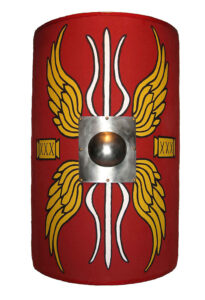
Reproduction of a Roman scutum. The insignia on this example indicates its owner would have been a member of the 30th Legion. (click image for larger view)
- thureos
- a large oblong, four-cornered shield
This description corresponds to the Roman scutum, the standard shield of the Roman army.
A scutum was rectangular in shape, deeply curved along the vertical axis, and made of three layers of wood glued together (an ancient type of plywood), covered in canvas or leather, bound on all sides with a metal rim, with a large umbo (domed steel plate) riveted to its center, resulting in a shield that was well-built and extremely sturdy. Dimensionally, it was about 1/4″ thick, stood about 42″ tall, had an effective width of about 26″, and weighed about 22 pounds. The decorations on the shield’s front side indicated the legion to which the shield’s owner was assigned.
The shape and size of the scutum allowed packed formations of legionaries to overlap/interlock their shields to provide an effective barrier against missiles (darts, arrows, javelins, etc.). The most novel (and specialized, for it afforded negligible protection against other attacks) use of the scutum was the testudo (Latin for “tortoise”) formation in which the first rank of legionaries held their shields vertically and interlocked, with the subsequent ranks holding their interlocked shields over their heads to protect against descending missiles (such as arrows or objects thrown by defenders on walls)Misconception #3
The typical sermon on the armor of God would describe a shield as purely defensive, but in actual use, a shield is also a weapon in its own right. Here’s some examples of its use as an offensive weapon:
- Shield Bash — This is a forward-movement attack where you use your shield as a battering ram by running/lunging at your opponent and slamming into him with it. This is the very reason why a scutum was equipped with a steel umbo in its center.
- Shield Swipe — This is executed when you swing it at your opponent from one side to the other, knocking both his weapon and defenses aside while simultaneously following that up with an attack using your sword to stab or slash at whatever vulnerable targets become available.
- Foot Slam — Another tactic unique to shields like the Roman scutum was to slam the bottom edge down onto your opponent’s foot — probably breaking it — thereby distracting him with the pain, crippling his ability to move, as well as temporarily pinning him in place for you to stab and slash at while he was trying to simultaneously defend himself and recover.
In the hands of a soldier trained in the proper use of both together, a sword and shield are a potent combination for both attacking your opponent and keeping his counterattacks at bay. But what happens when your active defenses fail?
That’s what armor is for!
The Rest of the Armor
If you were able to defend yourself perfectly 100% of the time against one or more opponents regardless of their numbers, size, skill, or strength, armor would be unnecessary — indeed it would be detrimental because it adds weight and hinders your movement. But, as an imperfect human being faced with someone who might be stronger, quicker, more agile, and/or more skilled — or worse still, facing more than one of them — having some backup protection is a mighty handy thing to have on your body at the time.
Generally speaking, armor is indeed totally defensive in nature, though items of armor attached to your limbs can be used offensively: both manica (bracers or arm guards) and greaves (shin guards) can be used to strike your opponent. But other than those very limited exceptions, armor comprises what is called a passive defense. What I mean by “passive” is that such pieces of armor are worn, rather than actively wielded and they exist for the sole purpose of protecting you when your active defenses (sword and shield) fail to protect you.
And some of what you wear — such as your boots — as a soldier is simply necessary to endure the hardships of long forced marches, though in close combat, kicking and stomping with them are certainly valid uses.
The Breastplate
This term is widely misunderstood in preaching circles. Many suppose, because we in modern times associate the term “breast” with the front half of the torso, that a breastplate would be armor that only covers the front of the body.
Not so!
The Greek word for “breastplate” is thorax, which means:
- thorax
-
- the breast, the part of the body from the neck to the navel, where the ribs end
- a breastplate or corset consisting of two parts and protecting the body on both sides from the neck to the middle
The Roman version of such body armor was the lorica segmentata or “segmented armor.” This was composed of a series of articulated bands of steel covering both sides of the torso as well as the shoulders that was far more effective — especially more puncture resistant — than the typical chain-mail or leather armor worn by their opponents of the day. And because it was segmented, it allowed reasonable freedom of movement while still affording superior protection to its barbarian counterparts.
While such armor was weaker when a stabbing attack came from below, striking upwards (it still took an extremely lucky shot to pull off such an attack successfully), any blow which got past your sword and shield from above and either side would simply glance off.
The Helmet
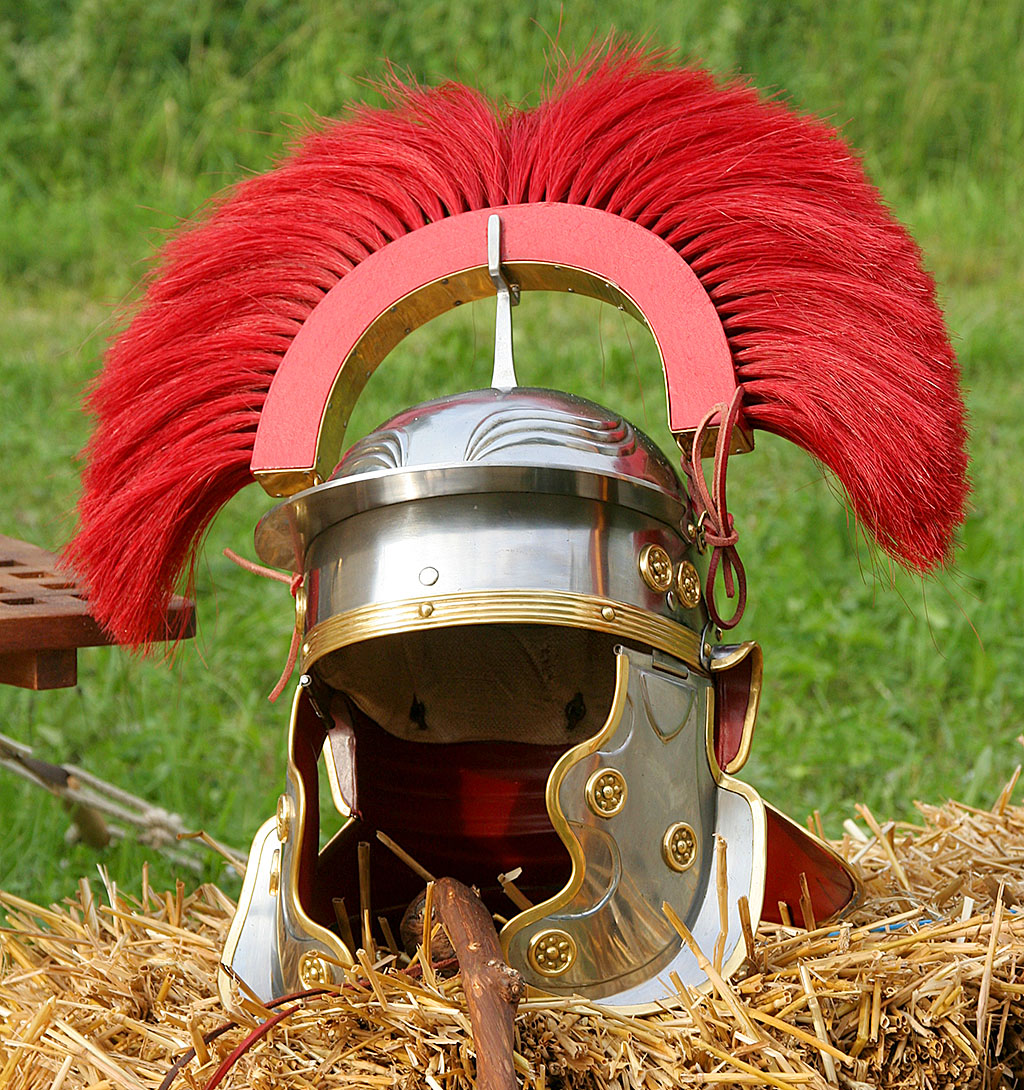
Reproduction of a Roman centurion’s galea (circa 1st century) The sideways crest indicated his rank as a centurion, the commander of 100 men (click image for larger view)
This is the least misunderstood piece of armor because helmets are still currently in daily use by both military personnel and civilians, the chief civilian application being to protect the heads of bicyclists, motorcyclists, and racing drivers during an accident and football/baseball players as they play their respective sports.
The Roman galea:
- Was typically constructed of steel, often with brass decorations. Those of high-ranking officers, such as generals and tribunes, would be trimmed in gold instead of brass
- Had a short bill which afforded both a modicum of protection of the eyes from the sun, but also deflected downward slashes to the face
- Had small extensions on each side that provided protection for the ears
- Had a neck guard much like those we see on modern firefighters’ helmets
- Had hinged cheekpieces that protected both sides of the face, with a leather thong tied under the chin to hold the helmet on the head
- Had a socket on top into which they could insert a crest made of dyed horsehair or feathers. The size, shape, color, and orientation (front-to-rear or sideways) indicated the rank of the wearer
The Boots
Ask any infantryman or marine and they will be the first to affirm the fact that footwear is a critical component to their existence — it protects their feet during troop movements and combat and can be used as a weapon through kicking or stomping your opponent during close-quarters battle.Roman caligae were the Roman’s answer to this need. Though caligae were made of 3 plies of tough leather with hobnails on the bottom for reinforcement and traction, they were what we in modern times call “sandals.” Caligae were normally worn over bare feet, but when snowy terrain or cold climates were encountered, woolen socks would be worn under them. There were also variants which provided more coverage of the feet, but what we see here is what was most likely worn in Judea during Paul’s lifetime.
While there were some obvious downsides to wearing sandals in combat, caligae were actually more healthy for the soldiers of the day — an era when medical knowledge of bacteria, viruses, and fungi was still centuries in the future — because they prevented many of the foot problems faced by soldiers who wore closed footwear in later times, such as trench foot, athlete’s foot, and infected blisters.
Putting It All Together Spiritually
Sword & Shield
Just as the physical gladius and scutum of the Roman legionary were wielded as inseparable partners when both attacking and defending, so too the spoken Word of God and our faith are equally inseparable partners in our battles against the negative circumstances in our lives as well as the powers of darkness.
Our faith is in the character, will, and ability of the One True God as revealed in His Word. When we speak the promises of God’s Word in prayer, it carries the same power as when He spoke the universe into existence. His spoken Word is a creative force that resounds through the spirit realm calling angels to attention and obedience to perform God’s will as it comes from our lips. His spoken Word stabs and slashes the devil and his legions arrayed against the Church Universal, causing them to abandon their evil schemes and retreat, shrieking with fear and pain. Jesus Himself said that the victory is ours, that the gates of Hell would not be able to stand against us!
And speaking of the Body of Christ, we are supposed to be standing shoulder-to-shoulder with one another, interlocking our shields and wielding our swords as one, protecting one another’s backs, mercifully and compassionately protecting and caring for our wounded (rather than turning on them as so many religious folk are tragically prone to do), operating in the unity of our faith at the direction of the Holy Spirit. And just as the interlocked shields of the Roman testudo formation protected the entire unit, so too our interlocked faith protects not only our own persons, but also our families and our brothers and sisters in Christ, as well.
The Rest of the Armor
So what happens when an attack sneaks past our sword and shield? Our passive armor takes over as our protection! Our heart and innermost being are protected by the imparted righteousness of Jesus:
For He (God) made Him (Jesus) who knew no sin to be sin for us, that we might become the righteousness of God in Him.
2 Corinthians 5:21 (parentheses mine)
When Daddy God looks upon us, He does’t see us as the colossal screw-ups that we tend to be, but as sinless, holy, blameless, spotless and without blemish, washed in the precious blood of His beloved Son, our Lord and Savior.
The helmets we wear, our assurance of salvation, protect our thoughts from fear of rejection by God when we fail. Our salvation is by grace alone through faith alone in Christ alone, not on our performance or lack thereof and that knowledge gives us confidence that nothing will separate us from the love of God, that we are accepted in the beloved.
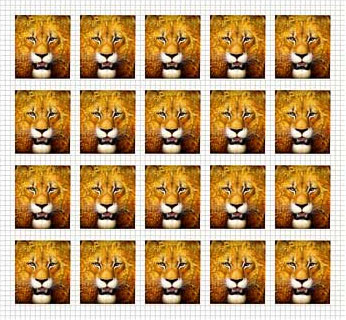
Example of Gridding Your Lions 🙂
So while we may receive wounds from life’s circumstances, nothing can touch the core of our being or shake us out of our confidence in God’s Truth: the totality and finality of our salvation and the righteousness that was imparted to us upon conversion.
And what are we standing on? The peace that comes from our confidence in the Good News of God’s Kingdom manifesting through His sons and daughters on this earth, that we are inseparable citizens of that kingdom, and that God’s shalom which surpasses all human comprehension is guarding our hearts and minds in Christ Jesus.
Man, I just preached myself excited! I’m fired up to go out and kick some devil butt!
You coming?
Thanks for reading!
Photos & facts regarding Roman military equipment courtesy of Wikipedia.com

